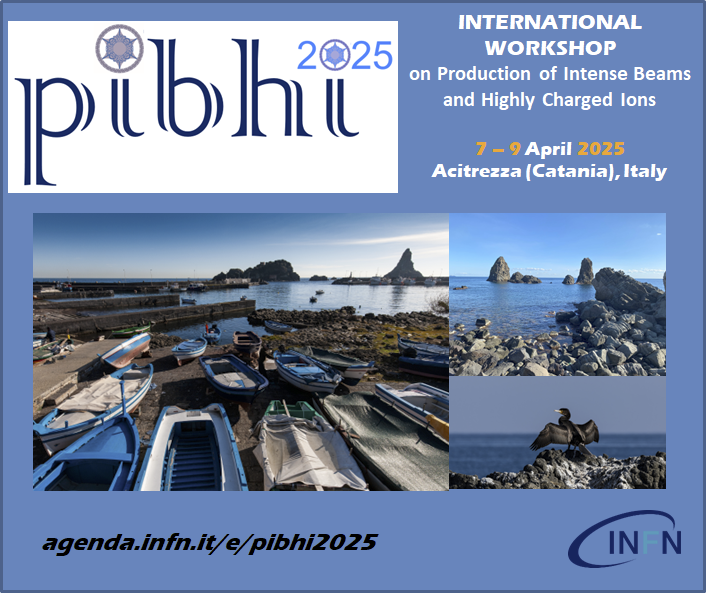Production of Intense Beams and Highly Charged Ions (PIBHI)
Gran Hotel Faraglioni

Accelerators worldwide require reliable sources, usually based on ECR heating, delivering intense currents of monocharged or highly charged ions, often much larger than the ones achieved. R&D efforts have been constantly carried out worldwide to ensure high beam availability and source performance.
The workshop aims to gather scientists involved in the design and operation of such sources to compare different experiences, discuss and find solutions to the several operational troubles usually encountered (e.g., stable and reproducible production of such intense beams, extraction and transport of space-charge-dominated beams, etc.).
The main scope of the workshop is to stimulate discussions among the attendees on several topics of interest in dedicated round tables, which usually are not part of the program of classical conferences like ICIS or ECRIS.
The Workshop is organized by the Istituto Nazionale di Fisica Nucleare-Laboratori Nazionali del Sud. The venue is placed at the foot of the Etna Volcano, the highest and most active in Europe, it includes several social events, which will enable participants to mix fertile cultural discussions with the state-of-art of our discipline enjoying the environment with natural and historical beauties.
Looking forward to meeting you at PIBHI 2025.
Luigi Celona
Chair PIBHI 2025
